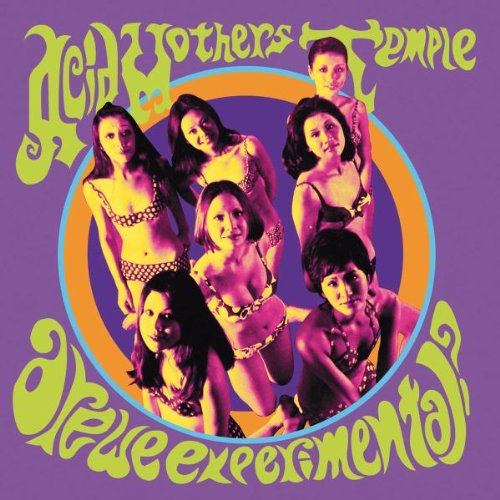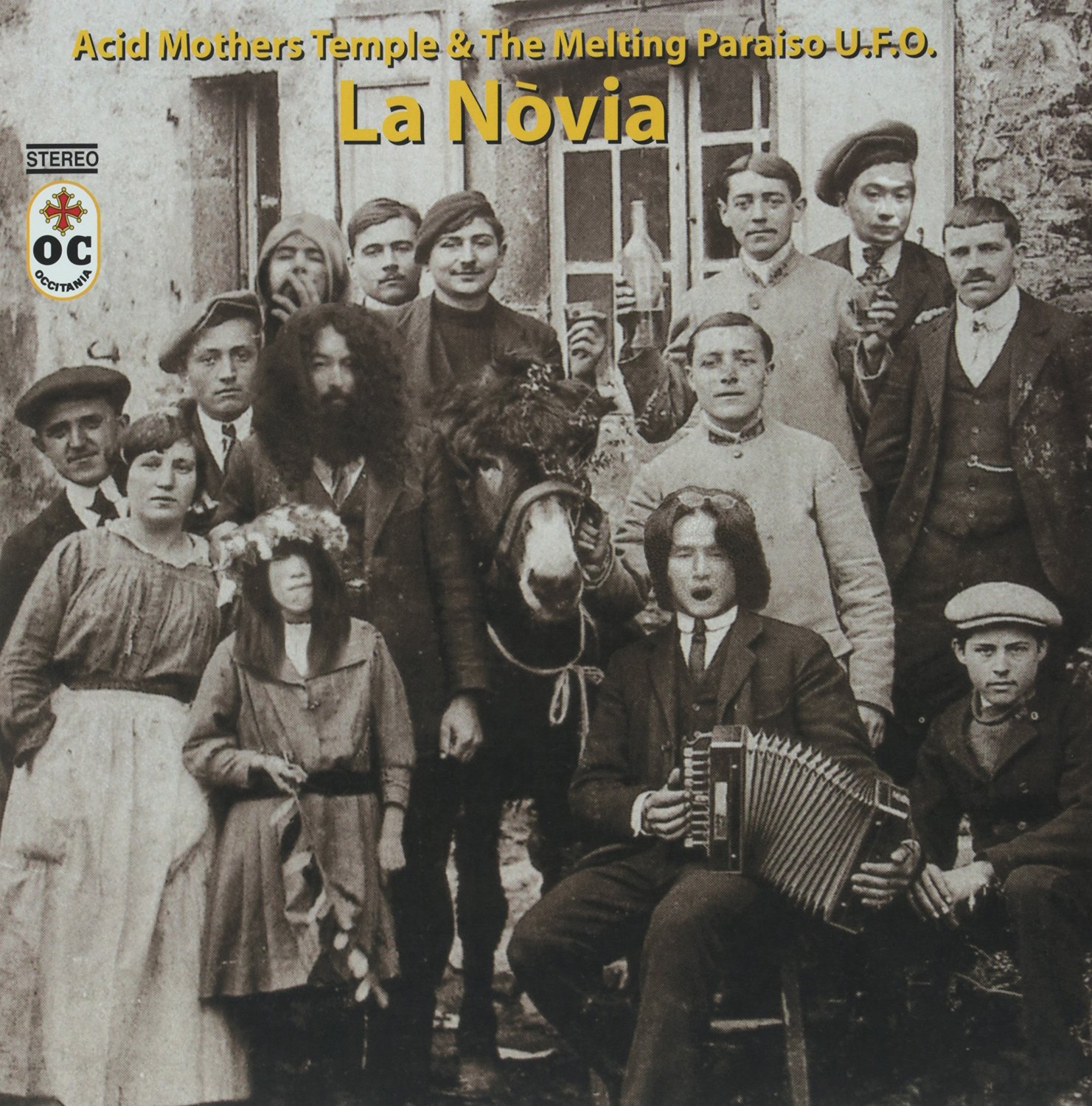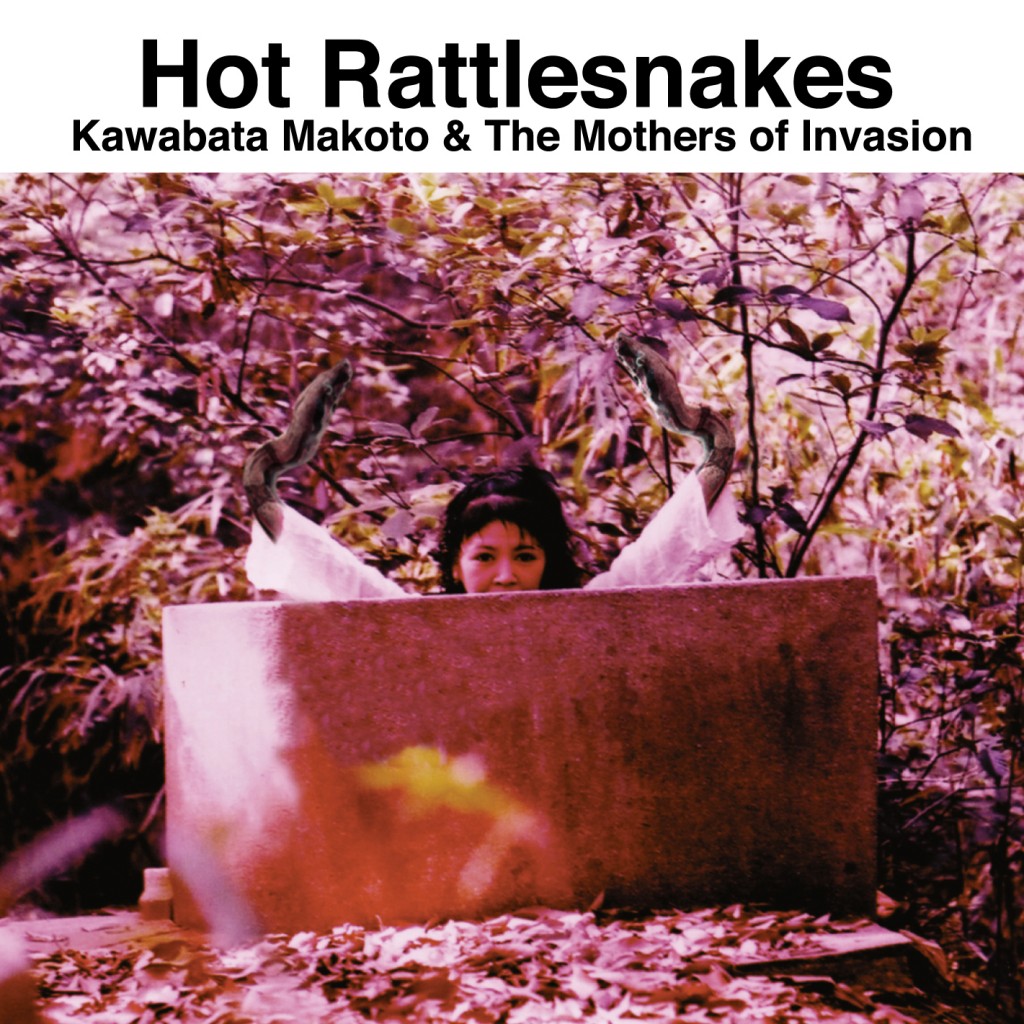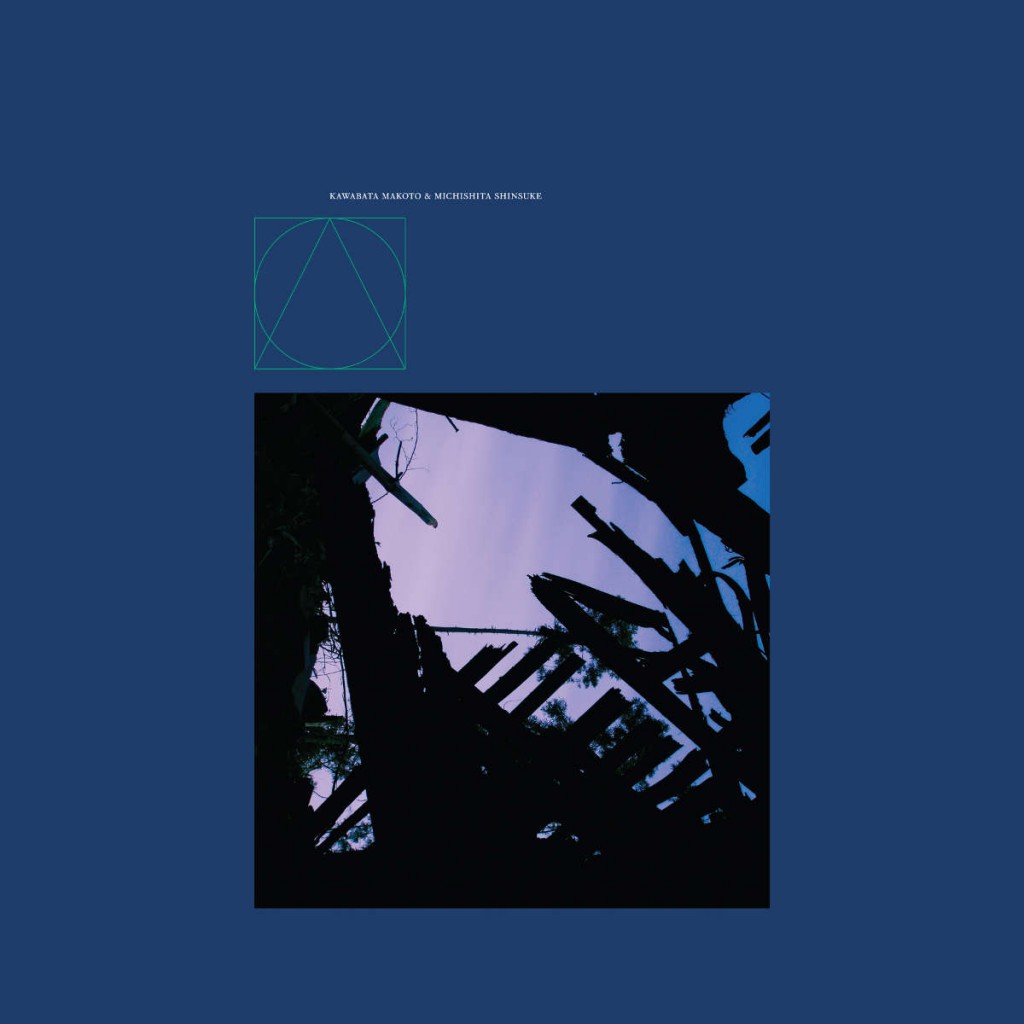
The world’s premier psychedelic warriors have blasted out an album that distills their weird world into 11 tracks of sonic mayhem.

The world’s premier psychedelic warriors have blasted out an album that distills their weird world into 11 tracks of sonic mayhem.

The sprawling 40 minute title track is based on an Occitanian folk tune, and the unearthly acoustic opening with its overtone singing sounds like something that might have made its way on to a Werner Herzog soundtrack. Indeed once the guitars come in and the band stoke up their mighty drone, the effect is that of an amped up Popul Vuh, the German band who soundtracked many Herzog films. Ashra Tempel or Amon Duul are other reference points. At times, it’s impossible to believe that this wasn’t recorded in Berlin in 1972, such is the authenticity of the enterprise. But Kawabata’s crew aren’t merely K-tel Krautrockers; La Novia shows a deep respect for the traditional folk form and integrates it completely with the long forays into deep space that the leader’s fuzz

In the works for almost 3 years, ACID MOTHERS TEMPLE vs. PLASTIC CRIMEWAVE comic book/7in record set on prophase music & film! Yes, plotted/written by Makoto Kawabata and Sir Crimewave and drawn by Plastic Crimewave, this cataclysmic tale of aliens, magic, and psychedelia is actually somewhat autobiographical, and packaged just like the 70s ‘Power’ book/record sets of his youth. The ‘soundtrack’ on the 33 1/3 7in is collaborative as well!

The onslaught continues. Makoto Kawabata, lead guitarist for the Japanese freakout collective Acid Mothers Temple, has issued yet another side project — it seems there is either an Acid Mothers or solo record coming out every month (maybe more than one). In any case, it hardly matters, because this is one of the strongest things ever released by Kawabata. Accompanied by bassist Tsuyama Atsushi and drummer Ichiraku Yoshimitsu, Kawabata wastes no time in taking the exploration to the stratosphere on the 27-minute opener, “Theme of Hot Rattlesnakes.” Right, it’s all jamming. And what sublime jamming it is. Kawabata and his counterparts never take the easy way out. There is no constant riffing here to get a groove and move from there, no song structures to be used as easy backdrops for liftoff points. It’s all exploration and it’s all rock. While the Acid Mothers can be extreme to the point of unlistenability at times, this music is extreme in another way, in the way Jimi Hendrix was extreme — in dynamics, sonic texture, space, and in his use of time slippage. Kawabata and his Mothers of Invasion use the studio as a mirror, and create a live performance within it. Yoshimitsu’s unreal drumming carries the weight in this ensemble, as Mitch Mitchell did with Hendrix, yet keeps both Kawabata and Atsushi moving in concentric circles ever outward, weaving the two instruments in the middle of the jam so tightly that they cease to have individual identities. On the humorously titled solo guitar piece, “Frippian Flipped Over Niffy Their King of Frippery,” a multi-note repetitive pattern (only remotely similar to something the guy whose name gets played on here would ever actually play) becomes something else almost immediately; the mirror image of tape delay becomes the bedrock for a host of lush sonics that all but swallow the guitar’s sound inside itself, becoming a blur of texture and low-end blissed-out choruses. The final track, “French Sweet Sugar House,” brings back the trio and the assault is on the unknown, on the boundaries of rock, jazz, and free improvisation, all played with such mastery and toughness that it’s almost unbearable for 15 minutes. This is acid music. This is music as acid. This is acid as music. This is music.
– AllMusic Review by Thom Jurek
November 11th, 2014 by MRR

This is a killer package containing a split 7” of totally bonkers heavy psych featuring Japan’s SPEED GURU with Kawabata from ACID MOTHER’S TEMPLE and Tabata from AMT/ZENI GEVA/BOREDOMS. PLASTIC CRIMEWAVE is outta Chicago and has been playing variants of psych and space rock since the late ’90s. The record comes with a comic book that is packaged like the old Power Records comic book LPs (Planet of the Apes,Spiderman vs. The Lizard People, etc.). SPEED GURU lays the smackdown with a ton of distortion on “Speed Guru Theme,” which is just the band saying their name over and over while fast and heavy psych plays over it. It’s essentially the same song that PLASTIC CRIMEWAVE does on their side, only with a different self-shoutout. They later get into a wild hippie/improv trip, which is much better than it sounds, I assure you. PLASTIC CRIMEWAVE’s opener also has simple, heavy fuzzedout bombastic wah-wah and the second song is even more fuzzed out and distorted to hell. Musically this isn’t punk like you know it but it’s certainly DIY, which I can dig, ya dig?
The enclosed book is a rad action comic illustrated by Plastic Crimewave (the person), which he co-writes with Kawabata. Crimewave also has done incredible work with his book-sized zine Galactic Zoo Dossier, which covers loads of psych/proto-punk/space rock knowns and unknowns, and is all handwritten and hand drawn. The cover shows Kawabata as an “electric samurai” wailing his guitar into the outworlds. The line work, especially the used of cross-hatching and shadows is fantastic. The story of various psychedelic/garage rock superheroes starts with Speed Guru not being able to draw comics after a bike accident. He goes to see Ancient Asahito (who’s drawn like Keiji Haino as a monk) at the Acid Mother’s Temple who tells him to “channel the elegant vibrations of the Cosmic Force of Electricity” (and probably the ability to release a million records). This also features some great drawings of Kawabata, who is the Speed Guru and student of Asahito. Eventually, Speed Guru and Plastic Crimewave come to blows as Plastic attempts the “Mystic Garage Punk Chop” (which is likely a nod to ACID MOTHERS TEMPLE’s love for pro wrestling and the fact that they often choke-slam guitars during shows). The story continues on with the battle of sound waves and space jams. I won’t spoil the rest as you’ll have to get this…and soon!
(Prophase Music)
— Justin Davisson

This is the third collaboration between Acid Mothers Temple guitar guru Makoto Kawabata and LSD March fuzz wizz Michishita Shinsuke. “Maru Mankaru Shikaku” means “Circle Triangle Square,” the three words describing the figure appearing on the album cover. The album consists of two 20-minute improvisations featuring small percussion instruments (various gongs, cymbals, shakers, and singing bowls, mostly at the beginning of “Rock of Fate”) and an impressive array of traditional string instruments, from lute and hurdy-gurdy to sitar, bouzouki, and mandocello — an in-studio photograph of the musicians and their combined arsenal shows 14 string instruments, and not a conventional guitar among them. Both tracks are long, inner-searching pieces, rhythm-less and mostly tone-less. These are drones; quiet though not peaceful, as they are ripe with dissonances, full of delicate mood swings like moments of doubt and philosophical turmoil. The tracks are echo-drenched, but one can easily hear both musicians switch back and forth between instruments, constantly keeping the music moving forward in a sedate chaotic state, even though there’s no real momentum to speak of. This is meditative music, but here meditation is seen as a dynamic, uncertain process, not a new-agey beatific practice.Maru Mankaru Shikaku is one of Kawabata’s most artistically successful releases in this vein, and will appeal to fans of his Inui series. This album first came out in a stunning LP edition on Prophase Music, on white-spotted green vinyl in a thick gatefold sleeve.